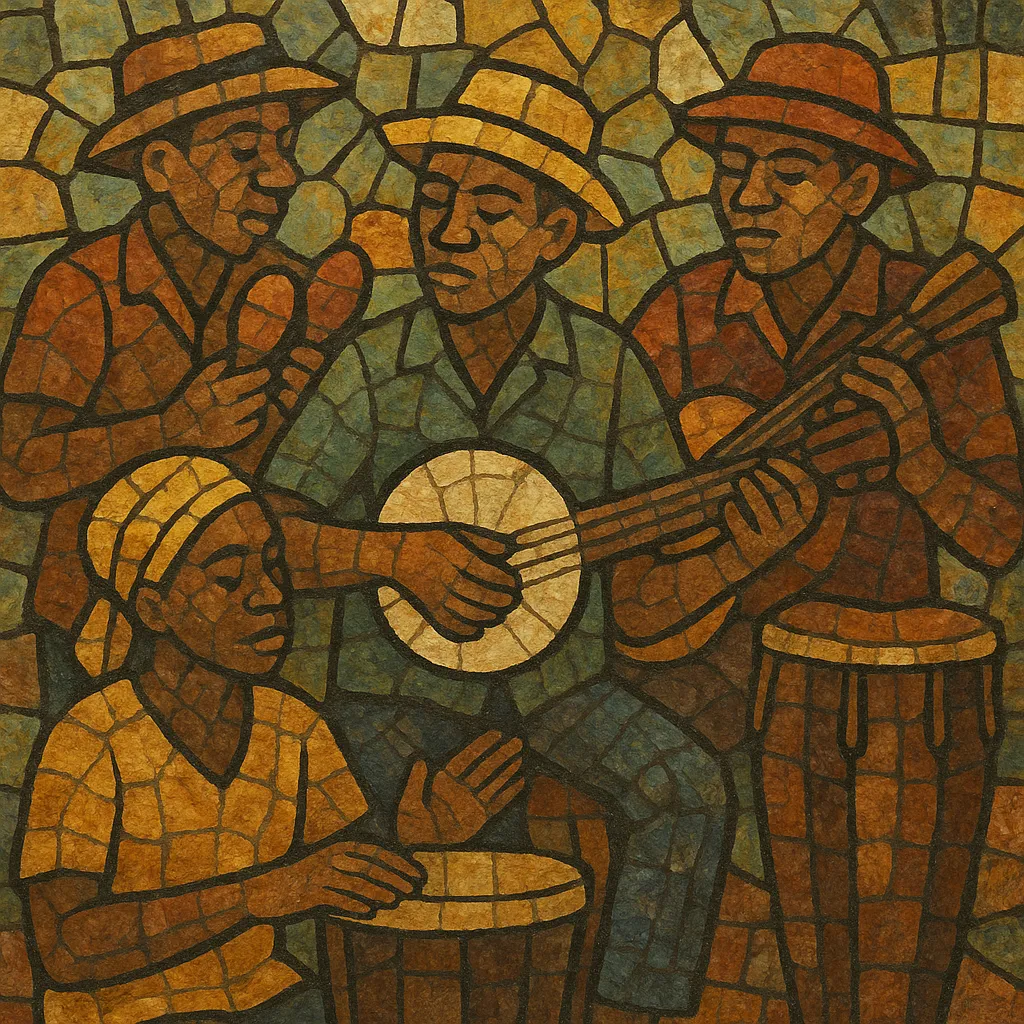Mento is Jamaica’s indigenous popular folk music, developed in rural communities and town dances well before the island’s modern pop styles. It is characterized by lilting, lightly syncopated rhythms, witty storytelling, and a distinctive acoustic ensemble sound.
Typical instrumentation includes the rhumba box (a local marímbula) providing a percussive, plucked bass line; banjo and acoustic guitar strumming offbeats and picking melodic fills; hand percussion such as maracas, scraper (guayo), and hand drums; and, at times, homemade bamboo sax or fife. Songs frequently use double entendres, social satire, and call-and-response refrains.
Although often mislabeled as “calypso” abroad, mento is its own Jamaican tradition. It predates and significantly influenced ska, rocksteady, and reggae, while also sharing kinship with other Afro-Caribbean forms through African rhythmic heritage and European dance influences (like quadrille).
Mento crystallized in Jamaica’s late 19th-century rural dance and yard-party culture, where African-derived rhythms blended with European social dances and song forms. Folk work songs, ring games, and festival traditions fed its repertoire, while itinerant musicians adapted banjo and guitar accompaniment to local grooves. By the early 20th century, mento bands were common at weddings, community dances, and holiday festivities.
The 1950s brought the first Jamaican recording studios and labels, notably Stanley Motta’s MRS and later Federal. Mento groups recorded prolifically on 78s, supplying hotel circuits and the burgeoning tourist trade. Amid the U.S. “calypso craze,” mento was often marketed abroad as calypso, and Jamaican folk pieces such as the banana-loading work song behind “Day-O (The Banana Boat Song)” reached international ears (popularized by Harry Belafonte). Artists like Lord Flea, Count Lasher, and The Ticklers helped codify a classic mento sound on record.
As Jamaica urbanized and sound system culture blossomed, mento’s acoustic dance sound ceded commercial space to ska, rocksteady, and reggae. Yet its rhythmic sensibility, topical humor, and offbeat strumming patterns fed directly into the rhythmic DNA of Jamaican popular music. Elements of mento harmony, form, and lyrical wit persisted in early ska repertoire and beyond.
Revival waves from the 1980s onward—spearheaded by groups like The Jolly Boys and later projects featuring Stanley Beckford—reintroduced mento to new audiences. Heritage bands continue to perform at cultural festivals and resorts, and archival reissues have clarified mento’s distinct identity within the Caribbean musical tapestry. Today, mento endures as a living folk tradition and a foundational influence on Jamaica’s global sound.


